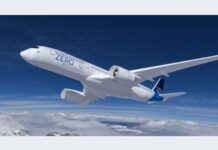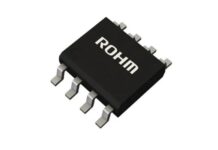Whether for mechanical applications, automation solutions or additive manufacturing processes – the positioning systems that have established themselves on the market are as diverse as the areas of application. But how can components, tools and workpieces be moved as precisely and accurately as possible? The motion control experts at Aerotech have been dealing with this question for over 50 years and have the right answer with the user-friendly Automation1 control platform.
Positioning systems in the nanometer range require high-precision control. Depending on the application, this usually requires complex programming. The corresponding know-how is not available everywhere. And that in turn means that more time is spent on application development and users end up having to wait longer for their order to be fulfilled.
Aerotech, which also has a branch in Fürth, Franconia, specialized in motion control and positioning systems over 50 years ago. The software developers in Pittsburgh concentrate day in, day out on programming software solutions for the motion control of laser scan heads, servomotors, tables and robot hexapods. The latest result is the Automation1 control platform, which boasts a number of new features in the current release.
Brett Heintz, Control Product Management Group Leader at Aerotech Inc. explains: “Six years ago, we set ourselves the goal of developing the most powerful controller with the most user-friendly interface. But not only that – we also wanted to offer our users the simplest development platform.” For the latter, a compiler was developed that makes the in-house development of motion solutions as uncomplicated as possible. “Never before have performance and usability come so close together – and we are only at the beginning of this journey,” enthuses the Aerotech engineer.
Connectivity and peripheral control are further strong pillars of Automation1. This allows the platform to connect seamlessly with safety controllers, PLCs, industrial lasers, cameras, sensors and more. The Automation1 drives also have more integrated memory than other servo motor drives, which enables precise and fast data acquisition. They also offer interfaces such as analog and digital I/O, a function generator at drive level and output signals. The position-synchronized outputs ensure ultra-fast and low-latency control. “Our interface hardware allows Automation1 to integrate with lower accuracy systems and other third-party devices via EtherCAT, Modbus and more,” Brett Heintz explains. ” So our focus is very much on optimizing not only the motion, but also the connection between the process and the motion.”
The platform features an intuitive configuration wizard for machine setup, EasyTune servo tuning with access to third-party devices, and the ability to create custom tooling using AeroScript libraries to get precision projects up and running quickly.
Brett Heintz explains the current state of development: “In the latest versions, we have improved our motion control by adding work offsets to the AeroScript and G-Code programming languages. Access control and secure communications with TLS cryptographic protocol are now included by default on Automation1 drive based controllers. This ensures that your proprietary motion profiles and process recipies are protected at all times.” The MachineApps HMI development tool has also been enhanced with new functionalities such as indicator lights, camera modules and access control. The platform now also integrates third-party Aerotech rigid linear gantries and non-standard products in the device catalog as well as machine setup. And support for absolute encoders has been further improved and a sockets interface for the transfer of binary and string data has been added. “With the new release,
CNC user interface is replaced
Aerotech is setting new standards in user interfaces for drive systems with the fully customizable “Machine Apps HMI development tool”. The user-friendly tool allows users to create customized interfaces without programming knowledge. It therefore speeds up application development and enables the creation of specific applications for different user types or functions.
According to Aerotech, each Automation1 controller can run one or more MachineApps via Launchpad, which are geared towards different user types or machine functionalities. Users can drag and drop modules into predefined areas and configure them as required. These typically include camera modules, data visualization modules, jog pad modules and more. The appearance of the interface can also be customized so that the branding of your own company can be used, for example. Brett Heintz emphasizes: “The bottom line is that MachineApps significantly reduces development time and is a flexible solution for machine builders who need specialized HMIs.”
EtherCAT compatibility for PLC-based systems
Automation1’s drive-based controllers can be configured as EtherCAT slave devices. “To understand the power of EtherCAT in conjunction with Automation1, it is important to understand the HyperWire network and Aerotech’s system-based approach,” specifies Brett Heintz. “With HyperWire, our proprietary high-performance fiber optic motion control bus, up to 32 axes of servo motor trajectories can be generated and distributed at 20 kHz each with less than 1ns of clock jitter. This is a level of performance that is unmatched in today’s motion control market.”
In addition, the platform supports 100 kHz trajectors for laser scan head control, including advanced trajector feedforward elements that are not available in mostdrives on the market. “The integration of EtherCAT allows our users to take full advantage of the HyperWire network from drive to drive. In this way, they can add the Automation1 controller and a complete network of drives via HyperWire to a comprehensive automation solution that communicates via EtherCAT,” continues Brett Heintz. In this way, users of precision solutions receive the high performance of an Automation1 HyperWire network while benefiting from the interoperability and comprehensive automation functions of EtherCAT.
Industry-experienced integration partner
Aerotech also provides its users with reliable support for testing, diagnostics and commissioning. Not only do the experts have broad, cross-industry knowledge, they also have powerful tools for testing, commissioning, troubleshooting and diagnosing control systems. This sets the Pittsburgh-based manufacturer apart from many other providers who do not offer this depth of mechanical integration.
The programming module, the AeroScript programming language, the Data Visualizer and program automation work together in the Automation1 Studio. The programming module gives developers easy access to code snippets and intelligent auto completion, which increases development speed and reduces errors. AeroScript offers powerful task and program control functions as well as debugging commands. The Data Visualizer is also a powerful digital oscilloscope that provides users with hundreds of controller, axis and task signals.
Custom AeroScript library functions help to simplify the automation of these diagnostic tools. Compiled library files can be added to the program automation functions so that these custom functions are available in the programming module and control APIs as if they were standard AeroScript functions.
Tools for direct access
With the Instrument Driver for LabVIEW and the Python API, developers who are familiar with these environments can directly access the performance spectrum of the motion control platform. The Instrument Driver for LabVIEW can be used to connectto the Automation1 motion controller, retrieve status, execute commands and use many other controller functions. These functionalities can also be combined with other instrument drivers to create powerful automation solutions.
In addition, a Python API allows interaction with an Automation1 controller. This API can be installed on Windows or Linux computers and thus offers the possibility to create powerful Python applications. Python is not only suitable for data processing and analysis, but also for improving user interfaces through easy access to UI tools.
The right movement for every industry
As a result, Automation1 offers a wide range of possible applications for various industries like no other platform. One promising use case, for example, is the use in pure I/O-controlled applications where no motion axes are involved. The Automation1- iSMC controller has interfaces such as Modbus and sockets as well as 4 user programming tasks as standard. With advanced configuration options, the number of user tasks can be increased to 31 and Modbus client connections to 16. “This means that our control platform can also be used in I/O-controlled environments to enable better control and monitoring,” explains Brett Heintz. A concrete example of this could be the integration of Automation1 in the control and monitoring of I/O-controlled processes in manufacturing or building automation. “This opens up new possibilities for the use of Automation1 beyond the typical motion control applications for which it was originally developed,” says Brett Heintz.

















